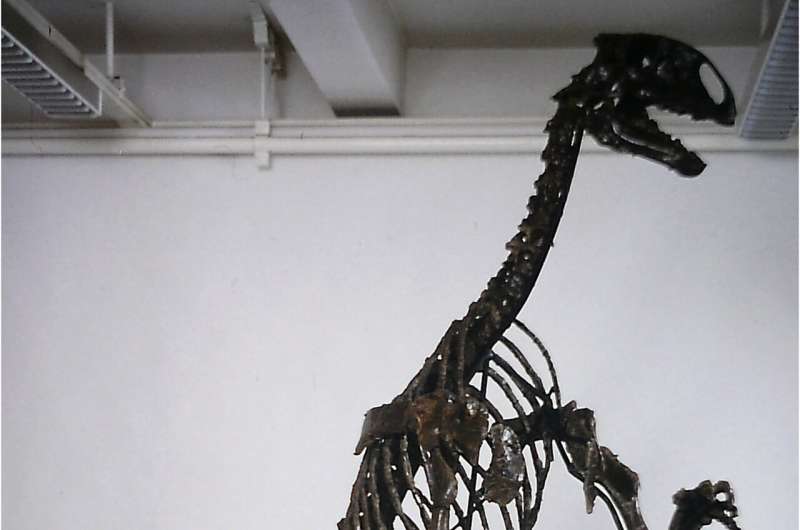April the museum dinosaur is still revealing new discoveries

Recent research regarding a dinosaur nicknamed April, previously housed in the UK's Manchester Museum, has revealed rare new findings.
Scientists made the discovery of gastroliths (stomach stones) inside the Tenontosaurus, which is unusually rare. This represents the second oldest occurrence of gastroliths in an ornithopod dinosaur and the first to be identified in a more derived ornithopod. Only three unambiguous occurrences of gastroliths in an ornithopod dinosaur are known. Manchester's Tenontosaurus is also the largest ornithopod dinosaur known with stomach stones.
The paleontologists behind the discovery used X-ray CT scanning and X-ray fluorescence (XRF) to assess so-called "seeds" and "ash" found with the specimen and revealed that they were not seeds after all and that the dinosaur did not die in a layer of ash, as had originally been suggested when it was found. However, the skeleton was found with two teeth of the predatory dinosaur, Deinonychus, a relative of the infamous Velociraptor. This finding provides further support that Deinonychus fed on Tenontosaurus, an idea originally suggested back in 1970 by American paleontologist Professor John Ostrom.
April's skeleton is one of the most complete, best-preserved examples of Tenontosaurus available, yet this is the first time it's been formally described.
The paper, published in Cretaceous Research, shows a rare insight into this era of fossilized finds to teach us about the behaviors of prehistoric animals and show them as once living, breathing animals rather than just (very) old bones. It provides paleontologists with more details about the lives of these individuals.
Doctors Dean Lomax and John Nudds from The University of Manchester, and authors of the new research, dedicated this study to their friend, colleague and co-author, Dr. Jon Tennant, who sadly died on 9 April 2020, before this study could be published.
Dr. Lomax said, "Jon completed his Masters at Manchester on this very specimen, in 2010. It was his idea for the three of us to come together and write this paper, which we officially began in 2018.
"Jon contributed significantly to paleontology and was a massive advocate for open access. At every opportunity Jon encouraged others and was immensely passionate about paleontology. This project would not have been possible if it was not for his research on the specimen described herein. Jon leaves a remarkable legacy behind."
April the Tenontosaurus was originally acquired for The University of Manchester in 1999 by Dr. Nudds. The specimen was formally on display in the museum and then was replaced by the cast of Stan the T. rex.
More information: John R. Nudds et al, Gastroliths and Deinonychus teeth associated with a skeleton of Tenontosaurus from the Cloverly Formation (Lower Cretaceous), Montana, USA, Cretaceous Research (2022). DOI: 10.1016/j.cretres.2022.105327
Journal information: Cretaceous Research
Provided by University of Manchester





















